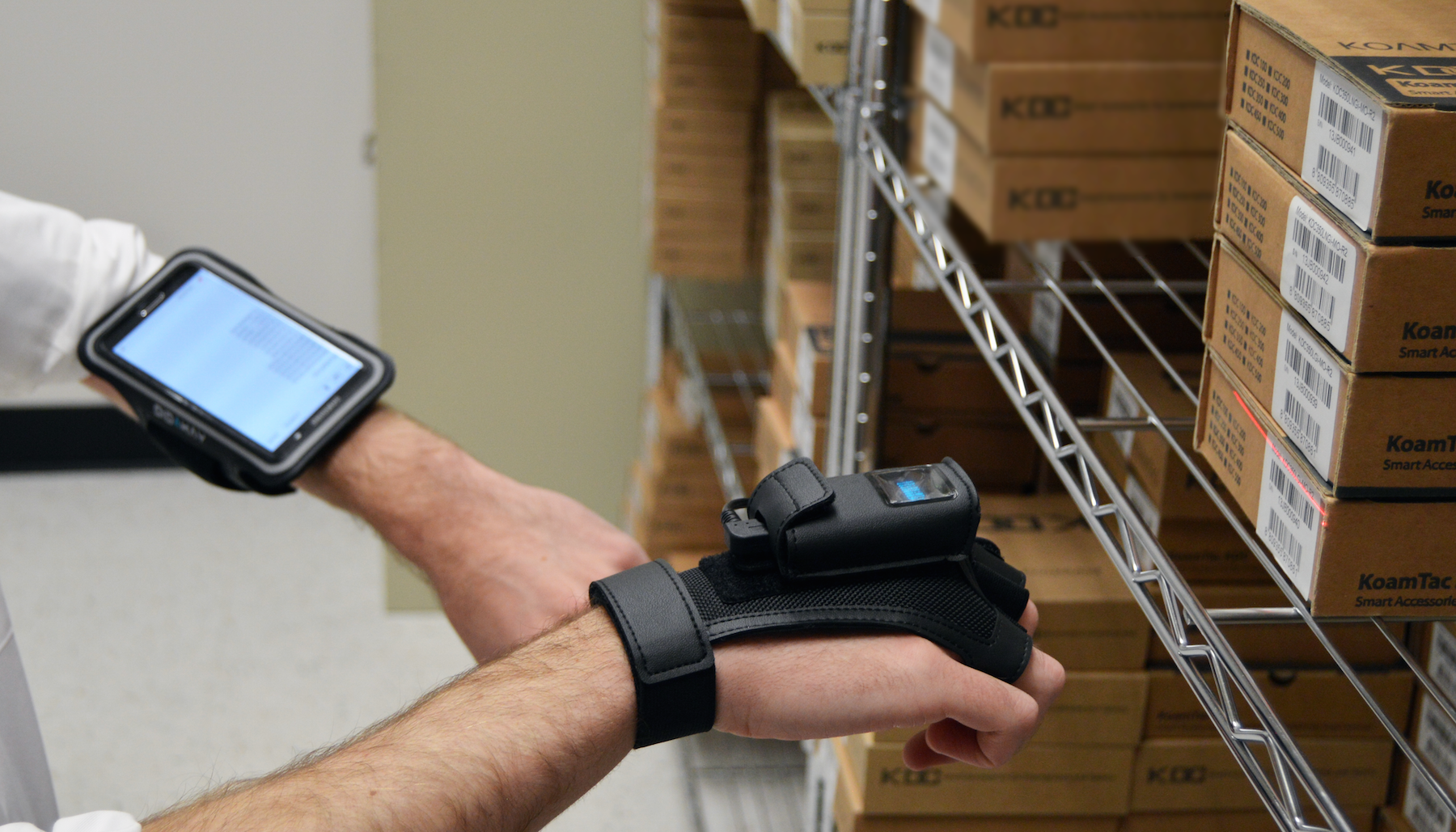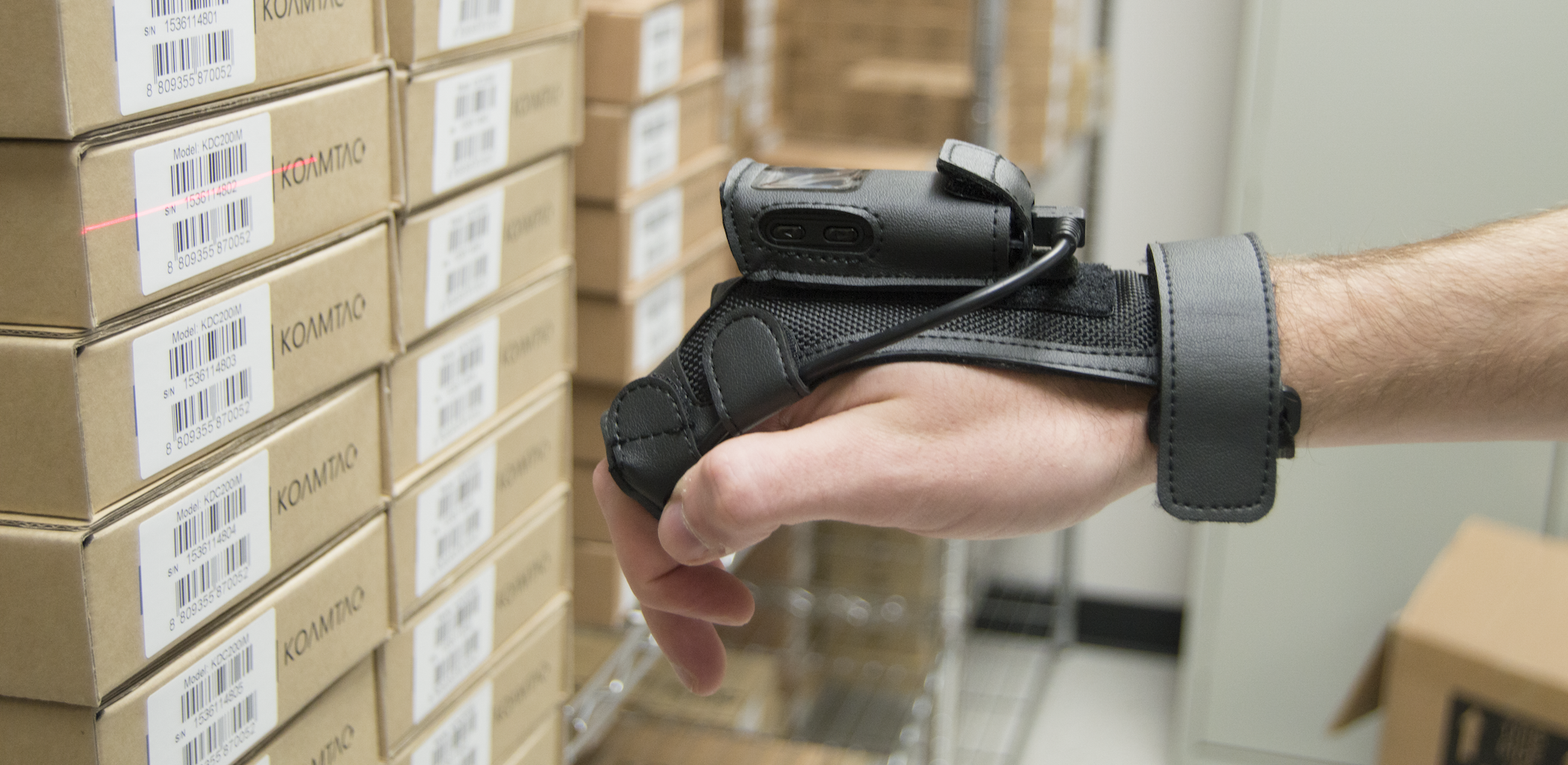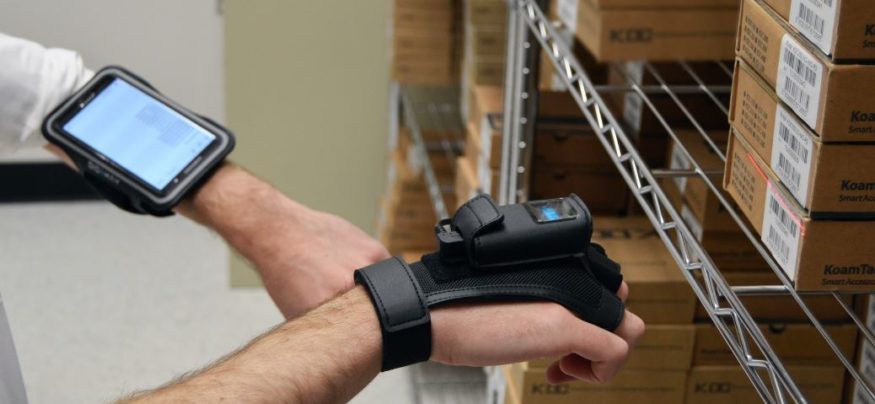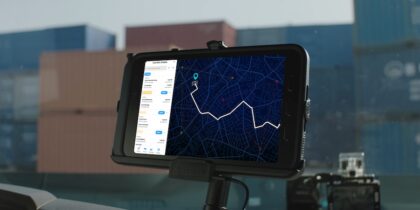As e-commerce drives a growing market for parcel shipments, carriers are leaning heavily on technology to shave precious seconds off of each transaction in order to keep pace with the growing demand. Forward-looking transportation and logistics companies are turning to wearable devices to give them an edge. KOAMTAC, a manufacturer of Bluetooth-enabled barcode scanners and mobile point-of-sale solutions, entered the wearables market with the KDC Finger Trigger Glove accessory. This commercial-grade, wearable barcode scanner links to a smartphone or tablet and can deliver efficiency gains for carriers and shippers.
The wearable barcode scanner glove pairs a KOAMTAC scanner with a Samsung mobile device such as a Galaxy Note or Galaxy Tab via Bluetooth. The ergonomic design of the glove is ideal for those who require the use of both hands during their work shift, and enables users to scan barcodes quickly and effectively. Dr. Hanjin Lee, President and CEO of KOAMTAC, explains that this technology can go a long way in aiding the parcel shipping industry. “Our scanners are ruggedized and ergonomic, but the only way to have a complete a solution scanner is with the accessories, and this accessory is the fastest effective way to scan for transportation and logistics enterprises large or small,” he says.

Wearable Scanners Integrate with Smart Devices
Many shipping carriers still use legacy devices that can cost thousands of dollars. But the power of cost-effective smartphones and tablets is changing the landscape. Designed for integration with Samsung smartphones and tablets, features and functionality of the Finger Trigger Glove solution stand out when compared to legacy or other industrial solutions. With the finger bar code scanning glove, the user doesn’t have to pull out a bulky proprietary scanning device, then put it away before picking up a package. “The trend is moving toward a more economical solution, so companies are adopting solutions that include Samsung smartphones so they don’t need fully ruggedized PDA that runs a full version of Windows,” Dr. Lee says.
Wearables Deliver Efficiency
Three of the largest parcel shipping carriers in Korea use the Finger Trigger Glove, Lee notes, and these organizations experienced efficiency and safety improvements. According to Dr. Lee, workers can do their jobs more quickly and safely because they can use both of their hands. “The user’s hands will be free to lift boxes, so the idea is to be more user friendly and ergonomic because the user doesn’t have to pick up a heavy device and put it down to scan,” he says.

The glove provides a level of efficiency to the process that is especially noticeable after thousands of packages pass through. With each transaction, the package handler can move each package just a little faster every time its is scanned. It’s also easy to wear the glove along with a smartphone in a case attached to the arm or wrist. The scanner is even battery powered for maximum mobility, so it does not require an external power source.
The Finger Trigger Glove is a practical solution that works. Smartphones and tablets support the glove’s applications for tracking, inventory management and other uses. And the accessory can even integrate any Samsung Galaxy mobile device on the market today, says Dr. Lee. While smart glasses and other wearables are still under development, the Finger Trigger Glove is one solution that’s available now. “While other wearable devices are not being applied in the real world, our scanner with the glove and a Samsung smartphone or tablet can be used today in real-life situations,” he concludes.
For carriers and shippers looking to speed up their supply chain, wearable technology paired with Samsung smartphones and tablets delivers results.








